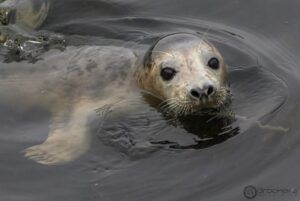The Dornoch Firth and Morrich More SAC is adjacent to the Moray Firth in north-east Scotland. Dornoch Firth is the most northerly large, complex estuary in the UK. The estuary is fed by the Kyle of Sutherland and is virtually unaffected by industrial development. There is a complete transition from riverine to fully marine conditions and associated communities. Inland, and in sheltered bays, sediments are generally muddy. Gravelly patches occur in the central section of the Firth. Wide sandy beaches dominate the large bays at the mouth of the Firth, and areas of saltmarsh occur around the shores. The estuary contains extensive areas of mudflats and sandflats. The flats extend in a wide belt along the northern and southern shores and are characteristic of a range of environmental conditions. It supports a high diversity of animal and plant communities supporting various worm species, amphipods, gastropods and bivalves. The sheltered bays provide a habitat for communities of algae, eelgrass (Zostera spp.) and the pioneer saltmarsh plant glasswort (Salicornia spp.) [1]. Reefs are also a protected feature of this site – these are defined as rocky marine habitats or biological concretions that rise from the seabed and may be one of two types: those where animal and plant communities develop on rock or stable boulders and cobbles, and those where structure is created by the animals themselves (biogenic reefs). Reefs are characterised by communities of attached algae (where there is sufficient light – on the shore and in the shallow subtidal) and invertebrates, usually associated with a range of mobile animals, including invertebrates and fish [2]. Like the Moray Firth, the Dornoch Firth and Morrich More SAC is also designated for sandbanks.
The Dornoch Firth is also home to two mammal species designated for protection within the site. The River Evelix and the River Oykel, which both feed into the site, and the extensive areas of bordering natural habitat including sand dune, woodland and small lochans provide habitat for the otter Lutra lutra. The area supports a good population of otters in what is the only east coast estuarine site selected for the species in Scotland. The site also supports a significant proportion of the inner Moray Firth population of the Harbour seal Phoca vitulina. The seals, which utilise sand-bars and shores at the mouth of the estuary as haul-out and breeding sites, are the most northerly population to utilise sandbanks. Their numbers represent almost 2% of the UK population [1].
[1] Dornoch Firth and Morrich More site summary, JNCC
[2] Reefs habitat description, JNCC
